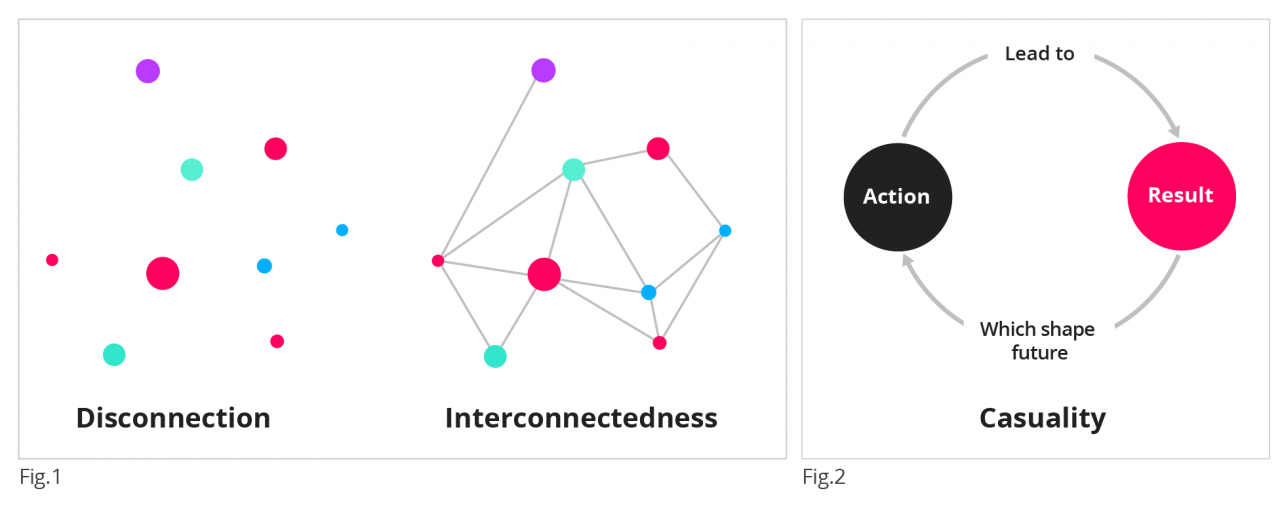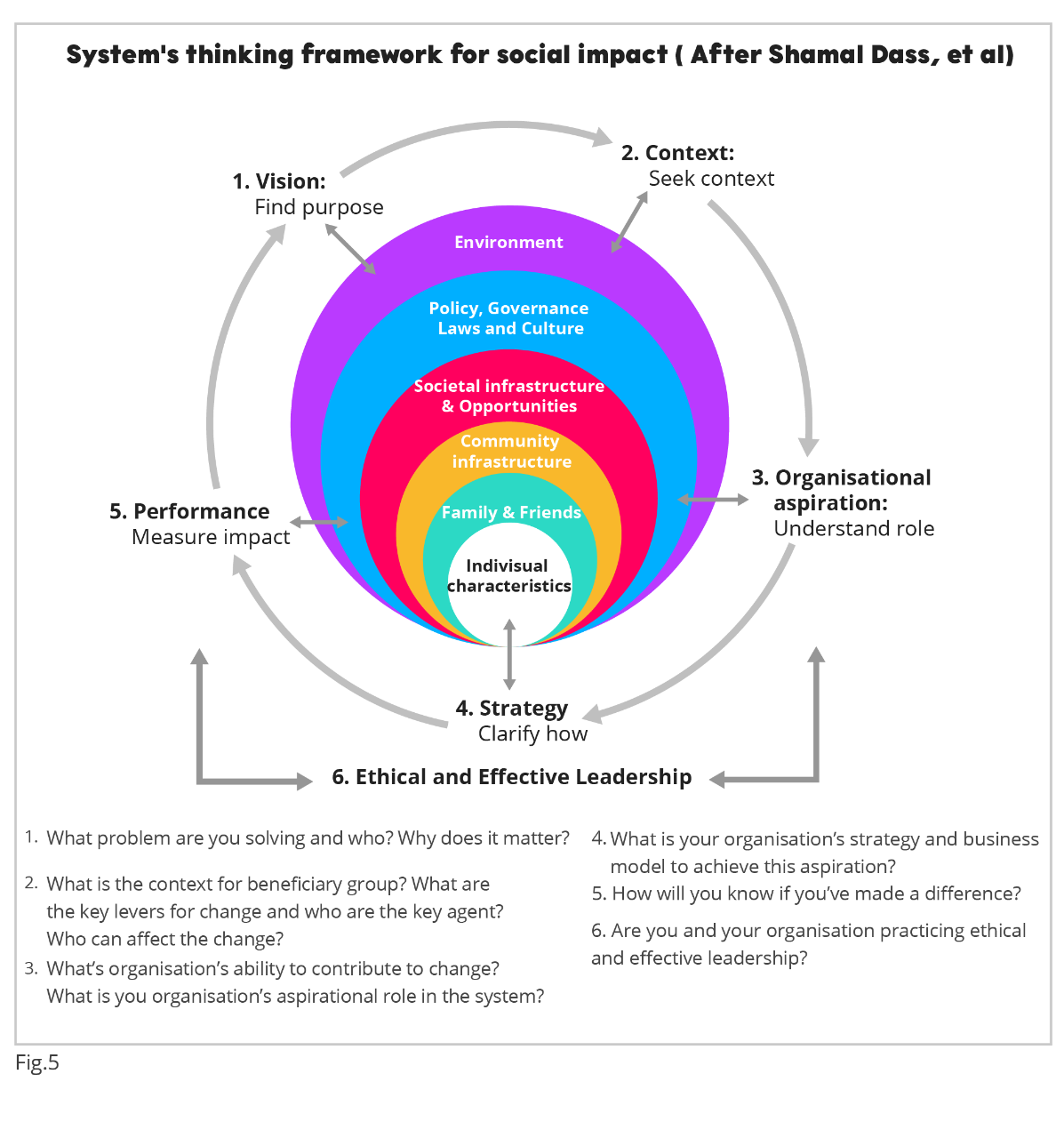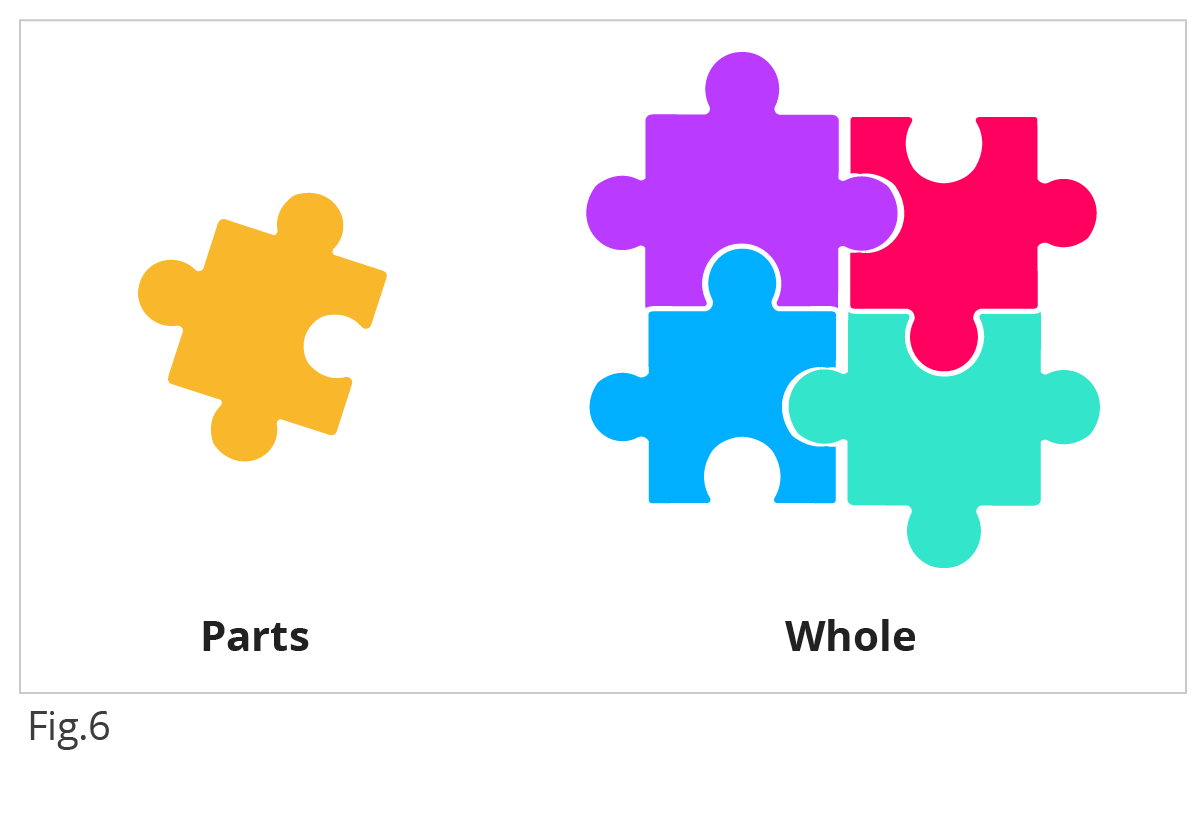We, the people, the human race, owe a great deal of our success to the cumulative efforts of our ancestors, in discovering and understanding how our world works from a systems perspective. We thrived by not just understanding the details well, but also due to our innate ability in connecting the dots between those details. Every action in the working of a system has an effect and every element works together to survive.
When we choose to see the systems, we let ourselves examine problems more completely and see how they are connected to the ‘whole’. The adoption of the systems thinker mindset ensures that our actions are accurate and wholesome. Systems thinking allows us to ask better questions when defining problems, before jumping to solutions. It teaches us that our actions might not have our intended effect on the ‘whole’, even with good intentions. It helps us see better.
Within the scope of this content, we take a quick glance at some features of what it means to be a systems thinker when it comes to problems our world is facing today. Whether you are a private citizen or a nonprofit, when embracing philanthropic inclinations, it is about time to ask if good intentions are good enough for an impactful intervention?
Climate crisis, food insecurity, gender inequality, global health, education, and environmental issues are among our most urgent problems. A complex issue often has interconnected elements (Fig.1) with complex cause and effect relationships between its components (Fig.2).

A systems thinker looks into the cause of the problem, its elements, and interrelationship between the elements (Fig.3), and their cumulative impact.
In an interconnected system, there are constant feedback loops and flows between elements (Fig.4). This means that they affect each other with possible unintended consequences. In a balanced feedback loop, all the various actors, actions and interventions are in sync and their relationships are mapped. Systems mapping helps to untangle cause and effect and identify effective solutions.

As a nonprofit, using systems thinking places your beneficiaries as one of the fundamental elements. It also requires understanding and considering the influence of your intervention on different layers in a short- as well as long-term. As a nonprofit or philanthropic individual and concerned citizens, the important question is whether the gain of the defined beneficiaries would add up and contribute to the community and society they belong to.
It also means to consider unintended consequences as the result of the work.
Let’s clarify by an example:
An article published in Harvard Business School illustrates an example on protecting environments, explaining that land conservation organisations have worked over many decades to protect and restore endangered ecosystems and develop solutions to tackle climate change. Yet, many struggle to identify their key beneficiary.
“Is it the earth itself? The flora and fauna they seek to protect? The human beings who live, work and play on the planet? Or some combination? The question that must be asked is what is the value of each organisation in the overall ecosystem? Some preserve small or large tracts of land, others work on energy policy, some on legislating polluter behavior or destructive farming practices. Wouldn’t the organisations be more successful at achieving their own mission, if only they raised their sights to unite in addressing the cause of environmental protection? Each organisation, of course, will focus on their core mission but with a holistic understanding of how the pieces fit and if possible, even collaborating where cracks appear. Understanding and working in context is key” And being mindful of unintended consequences is a necessity to ensure true and lasting success.
The same article illustrates another example by highlighting the issue of parallel, non-coordinated efforts i n the U.S, youth development efforts. Around a million young individuals dropout of high school every year and another roughly one million graduate from high school don’t follow through with vocational or college education. This has caused a high population of unemployed or underemployed youth. There are organisations that provide educational services to the youth in need while others address their physical, emotional and psychological health.
Many of these problems are interconnected, and unless all the dots are connected, it will not be possible to make progress in a systematic fashion at scale. Figure.5 demonstrates such holistic approach in dissecting the interlinking of components that affect the primary focus. It shows the effect of this mindset on the way organisations can link their solutions to the macro-system. Nonprofits can then connect their purpose, the beneficiary context and goals to the organisation’s mission, strategy, operational model and performance measurement for a greater impact.

Donate to the system with Kinder United Actions:
Systems thinking clarifies the otherwise opaque and abstract relationship between the components of an issue and helps organisations with the right questions that would lead to defining the right actions. It will help organisations to get to the heart of the why: check whether their vision impacts the key beneficiaries.
Kinder is ambitious to act on our world's problems in a cumulative fashion and to promote systems thinking by creating United Actions; bringing together charitable organisations that share the same concern and are taking necessary actions to tackle those concerns, each in their own unique way. The summation of each of their approaches would effectively target complex problems with a promise of long-lasting impact. To ensure systems thinking is appropriately applied, Kinder keeps up the inclusive search for organisations that connect their solutions to other elements within the system. United Actions are the product of our research on such organisations. We explore charitable organisations worldwide through our vetting process to find those that change the systems for a better world. We invite all the promising organisations to join a zone of advice for charities. Our Charity Zone is where organisations can see the reflection of their work from an external perspective and sign up for further lessons and advice.
Our wish is to nurture each organisation as a systems thinker and call for our concerned citizens to develop this mindset and keep an eye on the big picture that a problem sits within. We ask philanthropists to support a holistic strategy instead of a singular approach, when making giving decisions.
Kinder United Actions not only aim to streamline the donation process but also to present charitable organisations to potential donors in an integrated way. The aim is to provide donors with a fresh perspective on all dimensions of the problems, as well as the required solutions, giving them the confidence that their contribution is supporting different approaches needed to overcome one problem.
When compiling charity United Actions, Kinder carefully considers participating organisations such that there is a piece for every gap of the puzzle from systems thinking perspective (Fig.6). United Actions showcase the strength of individual organisations and educate donors with key beneficiaries and various dimensions of the issues. Systems thinking enables educated giving.





